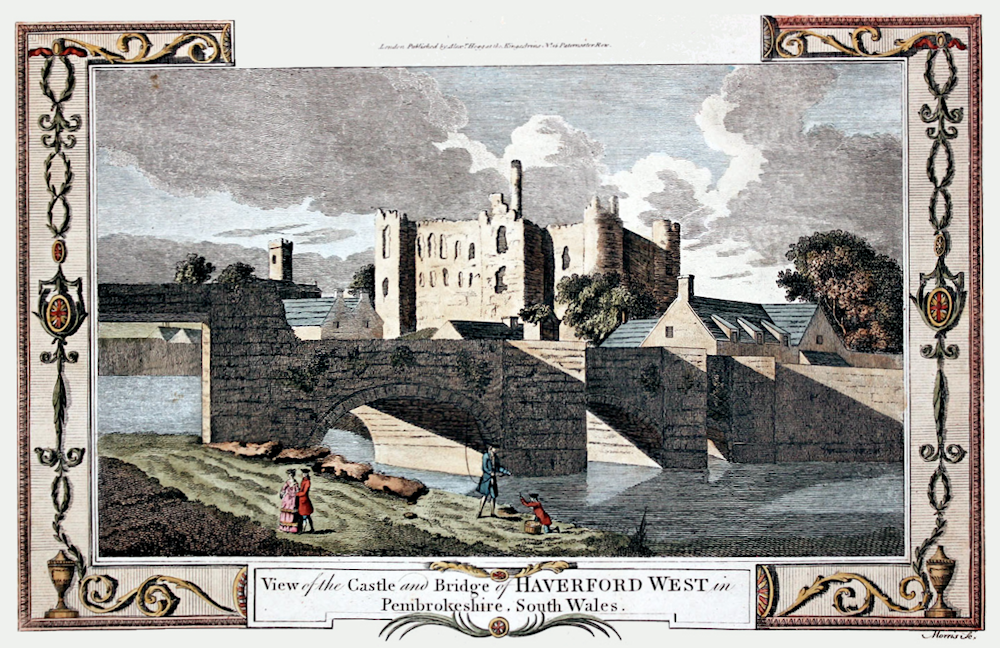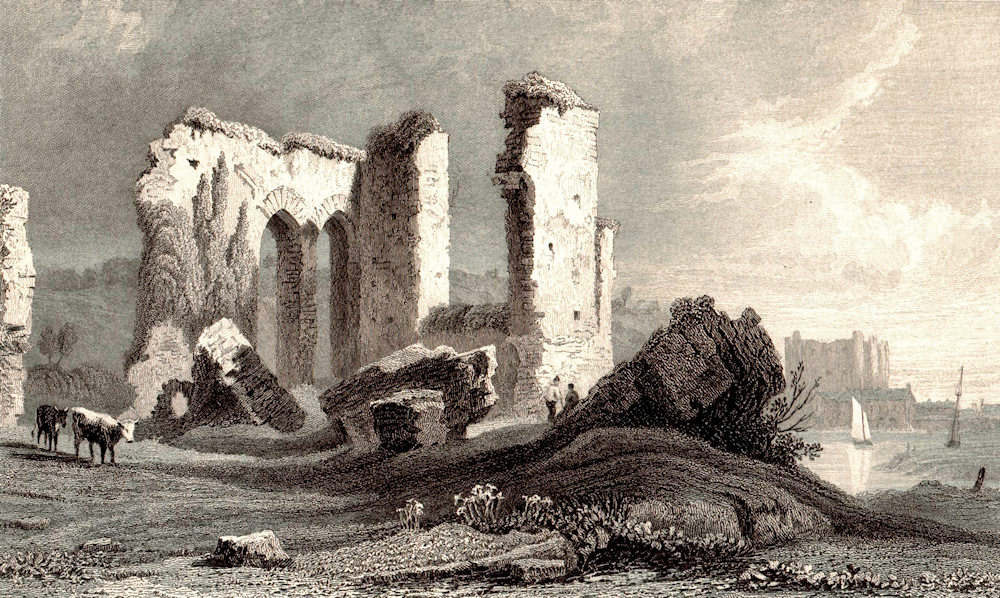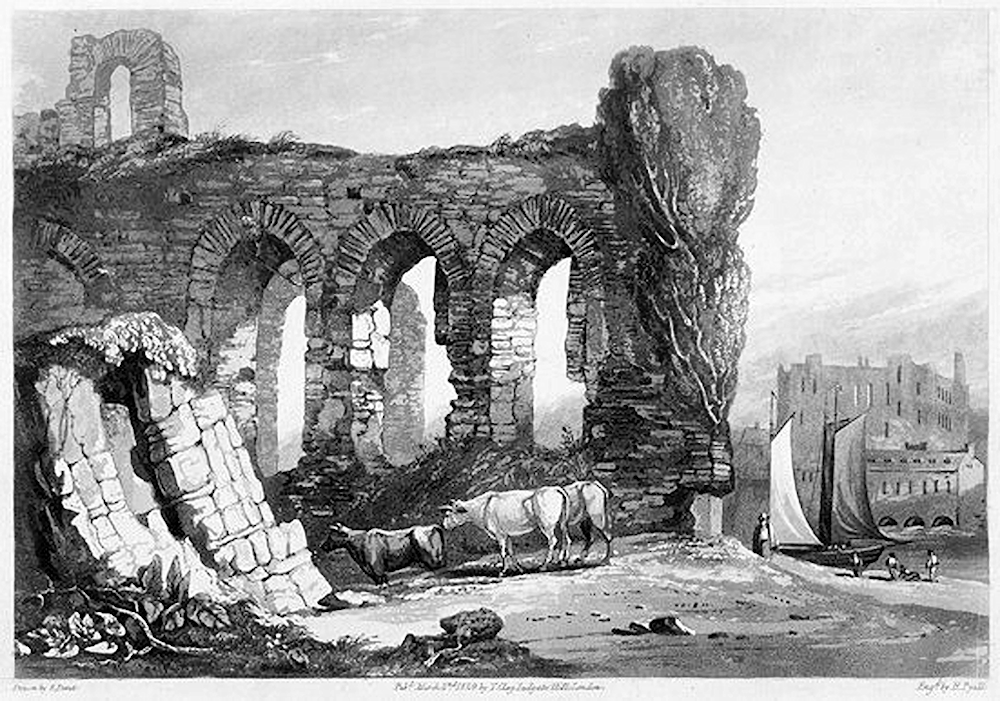The viewpoint in this picture of the castle is from the south looking up the Cleddau towards Crowhill and Tangiers, so the artist John "Warwick" Smith was most likely positioned in the area of Hermon’s Hill when he painted it.
 The painting was one of a series of 13 made by Smith to illustrate William Sotheby’s Poetic Tour Through Wales. Originally published as a volume of poems in 1790, the engravings after “drawings taken on the spot by J. Smith,” each had a colour wash applied by hand, depicting various scenes in Wales including Haverfordwest Castle.
The painting was one of a series of 13 made by Smith to illustrate William Sotheby’s Poetic Tour Through Wales. Originally published as a volume of poems in 1790, the engravings after “drawings taken on the spot by J. Smith,” each had a colour wash applied by hand, depicting various scenes in Wales including Haverfordwest Castle.
Smith is widely considered one of the most successful watercolourists of the late 18th century.
Francis Grosse was the son of an immigrant jeweller from Switzerland and a signifcant part of his adult life was spent in uniform initially in the army and later in the militia.
Always a keen artist, between 1772 and 1787 Grose published a series of works titled The Antiquities of England and Wales and his prodigeous output of more than a thousand illustrative plates the greatest collection of illustrations produced in the eighteenth century, the engraving was made by Samuel Sparrow. In 1809 these works were collected into an 8 volume set titled The Antiquities of England and Wales (New Edition) with the illustration appearing between pages 108 and 109.
The picture was reworked and published in The Modern Universal British Traveller and was also sold as a coloured print. There are anglers in both pictures although the boat is not present in the coloured print where a strolling couple have been substituted - although to me the scale of the couple does not match the rest of the picture suggesting it is the later image.
A member of the Royal Academy, Gastineau was a prolific artist exhibiting up to his death at the age of 85.
He was in his forties when he painted the Haverfordwest priory and was a well-established and highly regarded artist.
Originally a water colour picture it was reproduced in “Wales Illustrated In A Series Of Views” published in 1831
There is also a hand tinted version of this picture which was sold as a print although it appears to have been cropped.
Samuel and Nathaniel Buck are arguably the most important topogrphic artists of their time and offer an unrivalled view of the antiquities of England and Wales in the eighteenth century.
There is no romanticism in their work which offers a very workmanlike view of Haverfordwest Castle drawn less than a hundred years after the Civil War when Oliver Cromwell ordered its destruction.
We can tell from this picture that the river was very important to the town (indeed it was an important maritime port) and what we refer to as 'The Old Bridge' was at this time the only bridge and still quite new having been constructed only 14 years earlier.
To the right of the picture in the background we can see St Martin's Church and properties which are probably at or near Queen's Square, there are also what appear to be remants of castle walls that have disappeared but which probably mark the edge of Hayguard Lane.
To the left of the picture we see the familiar outline of St Mary's Church but at this time it had a steeple (which was removed 60 years later) and we can also see some substantial properties which appear to be in the area of upper High Street and Market Street.
In 1829 Samuel Prout returned to Haverfordwest and made another painting of the priory.
This work is featured in the book/folio “The Cambrian Mountains; or, A tour through Wales” alongside works by other artists including Turner.







